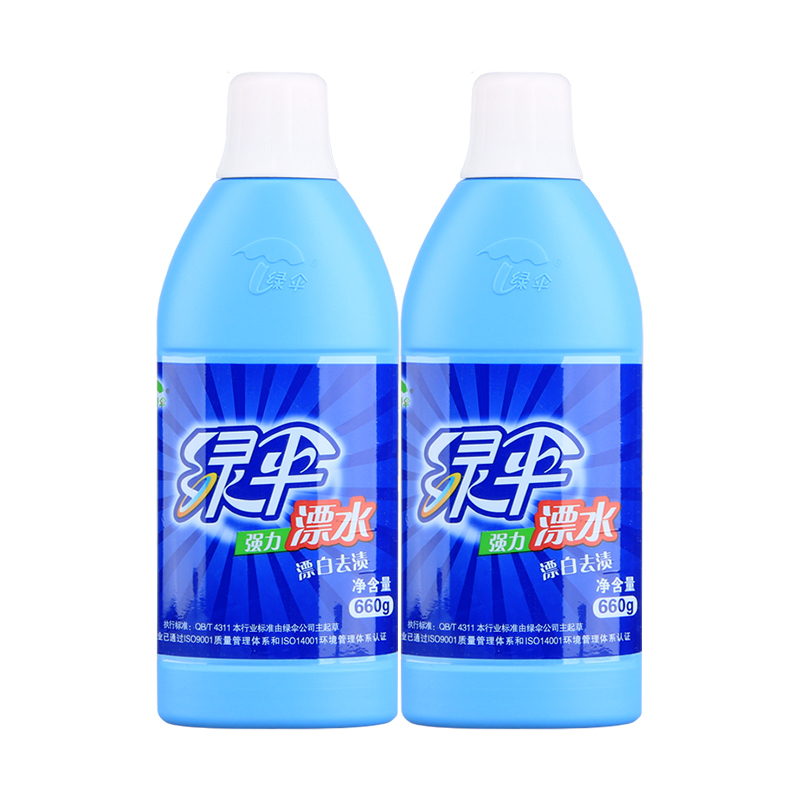The correct use of bleaching solution and the purpose of bleaching solution

All chemicals used for disinfection are hazardous and need to be used with caution. Commonly used chemicals include hydrogen peroxide (6%), chloride (70%), and isopropenyl compounds (70% to 90%).
Many widely used cleaners and disinfectants contain glutaraldehyde or formaldehyde. Prolonged exposure to glutaraldehyde and formaldehyde can cause cancer or death. Therefore, the use of such disinfectants should be avoided. (See "Using safe chemicals for disinfection", safer chemical disinfection methods; how to store chemicals safely,)
Many medical centers use the following safety guidelines when using chemicals:
The chemical disinfectant should be used in the open air, if it is equipped with a good exhaust fan indoors, or with good ventilation conditions, it can be used;
Appropriate amount of disinfectant should be used to avoid excessive use;
When using or placing chemicals, use gloves, protective glasses, masks and protective clothing to protect the skin, eyes and respiratory system;
Use appropriate containers to store chemicals for disinfection, and label them clearly on different containers. Be sure not to use these chemical storage containers to store other things.
Do not use buckets, food and beverage containers or glass bottles to store and mix chemicals.
Containers for storing chemicals should be closed and placed upright. Check if there is any damage, leakage or fragile places in due course.
Use safe chemicals for disinfection
Some medical centers contain harmful chemicals, such as glutaraldehyde, in the cleaning products used for disinfection and cleaning. (Actually, the surfaces and floors of these medical centers can be cleaned and disinfected with low-hazard and cheap chemicals. Hot water and soap are the most effective for daily cleaning of surfaces, floors, walls and furniture. People with infectious diseases In areas where patients are waiting and treated, it is important to use powerful disinfectants to prevent the spread of diseases. A 3% hydrogen peroxide solution contains orange oil and other natural oils and is suitable for disinfecting floors and surfaces.
Such chemicals are not harmful to human health and do not require special treatment before being stored. Safe sanitizers can also be made from vinegar and hydrogen peroxide.
Use bleach to disinfect
Many medical centers use bleach to disinfect walls, floors, and tables. You must be extra careful when using bleach for disinfection, because once the bleach splashes on the skin or eyes, it will cause damage to the skin and eyes. At the same time, inhaling the smell of the bleach can also cause harm to the human body. If some white vinegar is added to the bleach, the disinfection effect of the bleach can be improved.
Use barreled bleach
Where used bandages, cotton balls, gloves and blood bags are discarded, there should be buckets of bleach. In addition to preparing barrels of bleach every day, it is also necessary to prepare barrels of bleach when dealing with large amounts of waste. When necessary, equip two bleaching buckets, one for disinfecting waste that needs further treatment, and the other for disinfecting instruments and devices that can be reused. Gloves, syringes, IV bags, needles, and other items that cannot be reused should be cut into small pieces before putting the bleach solution.
There should be enough bleaching liquid in the bleaching bucket to fully soak the contents. Each soaking requires at least 10 minutes. The bleach bucket should have a sealed lid to prevent the solution from overflowing and to ensure the concentration of the bleach. If the bleach tank is not tightly closed, chlorine will evaporate.
Important! The bleach must not be mixed with other chemicals, especially ammonia. If bleach is mixed with ammonia water, toxic gas will be produced, which can cause death after a large amount of inhalation, and it can also cause an explosion at a certain temperature. After using the bleach, you should wash your hands carefully.
Wash clothes
In the past, many hospitals used carbonic acid to clean their sheets. This method is only suitable for sheets used by burn patients. Before washing linen sheets and clothes, they should be soaked in bleach for 10 minutes, and then washed with hot water and soap. When removing clothes from the bleaching bucket, you should wear gloves.
所有评论仅代表网友意见
